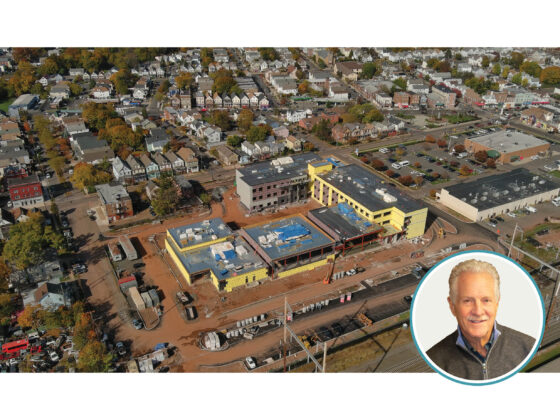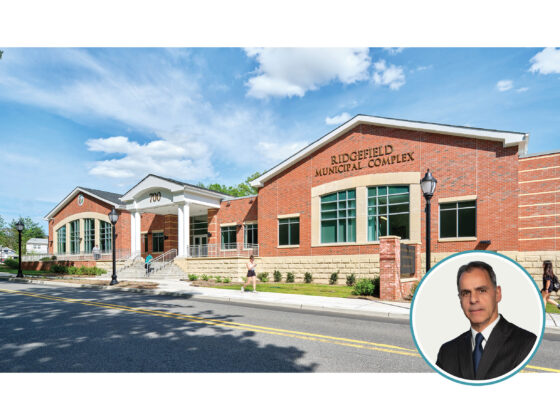Lloyd Rosenberg, AIA, president and CEO of Hasbrouck Heights-based DMR Architects has been through several economic cycles, including three recessions, since he started his company in 1991.
Fueled by the recent strength of the construction industry, DMR is celebrating its 25th anniversary with its largest headcount and is recording its highest revenue.
While not immune to economic cycles, the firm has used downturns as strategic thresholds in which it increases market share and adapt to new trends, often diversifying into new practice areas and adding key talent in recessions.
According to Mr. Rosenberg, the firm comes by its counter-intuitive growth strategy as a natural consequence of its beginnings: “In 1991, we only had three people, we couldn’t get any smaller so there was no place to go but up.”
Here are some thoughts on how he’s been able to grow his business through three recessions:
Using a Core Competency to Build a Diversified Practice – and Brand:
DMR’s diversification has many benefits and is the work of an intended strategy that had its roots in a single practice area. Working on various project categories with a wide variety of industries not only insulates the firm against cycles, it also keeps the staff interested and challenged, cross-pollinating the firm. But getting there is another matter — diversified professional practices are grown one piece at a time, and creating adjoining and complementary services, while an intended strategy, is more art than science.
Shortly after Rosenberg founded DMR, it earned the reputation as an esteemed school architect, ultimately serving more than 75 school systems throughout New Jersey. While working with schools, he developed relationships with municipal leaders and recognized there was a need for updated municipal buildings and, in some cases, urban planning, inspiring him to create a team that could address these issues as a cohesive unit.
“New Jersey’s multi-family needs have changed over the past decade, necessitating municipalities to collaborate with architecture firms that can not only create a vision plan for them, but also work them through zoning and other practical issues so that they can become a more sustainable community,” said Francis Reiner, PP, LLA, Senior Urban Designer, who joined DMR in 2008.
DMR’s diversification built on its initial strengths in school, articulating out to areas where it could apply its expertise profitably to new client categories.
For example, its assignment for the new 82,000 square foot Meadowlands YMCA includes design, permitting, planning and engineering roles — which are vertical and horizontal integrations of its legacy strength in school projects. Simultaneously, it is the architect for the new High Tech High School, which will be the most advanced high school project in the country.
Keeping Clients Happy/Relationship Building:
According to Rosenberg, “You’ve got to listen to what people are saying and convey that you sincerely care about what they need and about helping to find it.”
In South Toms River, DMR helped administrators see that they could get the municipal building that suited their needs for several generations by repurposing a daycare center. It has also recently worked with Hunterdon Medical to convert an office building into a 55,000 square foot satellite medical office, providing more convenient services to its patients in a warm and inviting atmosphere.
Keeping Staff Happy:
One of the great things about the culture at DMR is that with so many types of projects, there are constant opportunities for staff to collaborate and learn from each other. It makes each project seem fresh to the staff involved and results in more creative ideas for DMR’s clients.
Rosenberg also strives to create an atmosphere that is more like a peppy family than an office, most recently celebrating its 25th Anniversary year by providing staff with 25 daily surprises including a hot breakfast party, in-house massages and several 3 p.m. sweets breaks. Birthdays are a big to-do throughout the year, and they also celebrate the Winter Holidays yearly with an ugly sweater contest.
His employees appreciates his efforts to create opportunities for professional growth and personal comfort; the staff section of the company web site boasts that more than 13 of the staff have been with Rosenberg for more than 10 years.
“It’s energizing to know that while today, I’m working on the interior redesign of an apartment community, tomorrow, I might be managing the adaptive reuse of an office building into a police station, or assisting a local Community College create a space to accommodate for an entirely new administrative process” said Kurt Vierheilig, AIA, LEED AP, Senior Designer and Project Manager.
The staff’s tenure and experience also support the continuity of service in segments whose robustness occurs in different parts of the economic cycle. In turn, DMR always has the personnel base capable of shifting focus as the client base evolves.
This article originally appeared in Real Estate Weekly.




